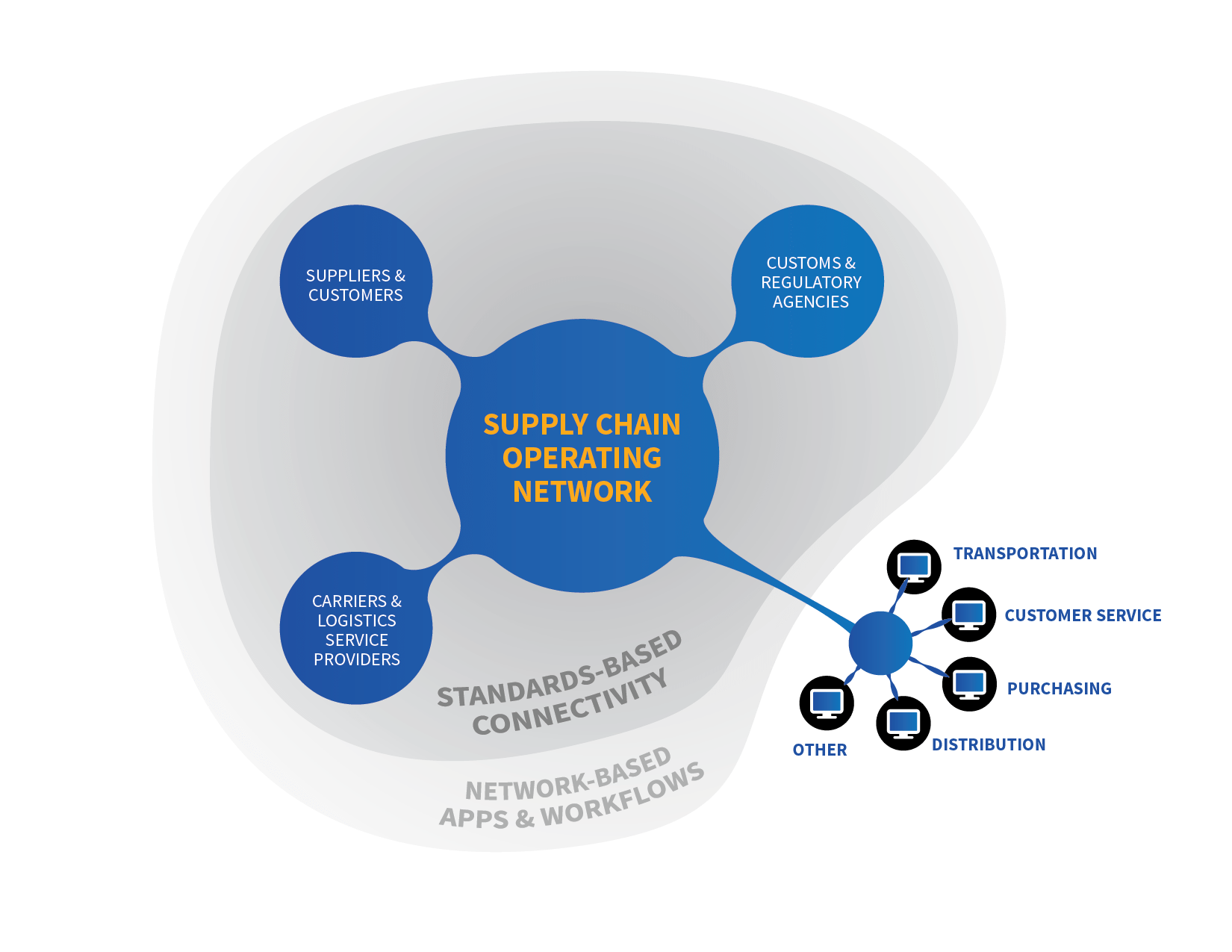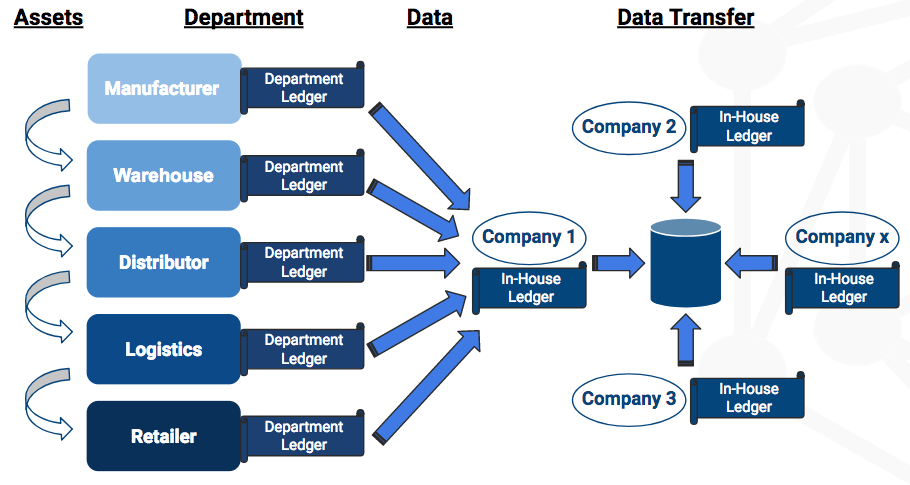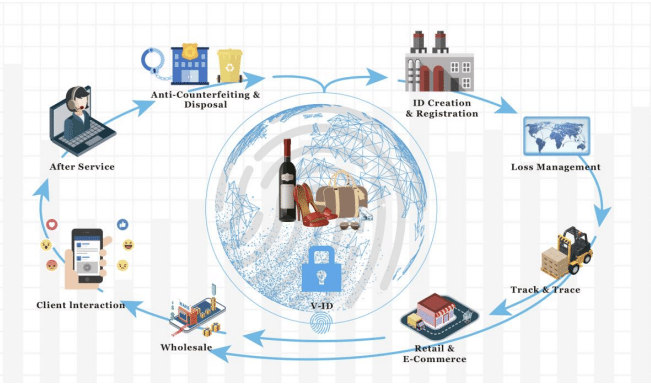Another article in our “Blockchain series” provided by Category Consultants MLG Blockchain – check out their “What Blockchain for business” comparison & leader-board.
Intro
Enterprises want more out of a new technology than simply a niche application. To drive tangible business value, blockchain adoption must be use-case driven, results oriented and involve minimal barriers to implement. Creating a flexible platform that will support both legacy systems like SAP, Oracle and future technologies such as IoT, AI, Big Data paves an easy route to adoption that provides returns in the long run. The retail industry’s total sales are expected to reach $27 trillion by 2020, making it one of the largest industries in the world. With fierce competition and thin profit margins, retailers must take advantage of both back-end cost savings as well as more accurate customer targeting and product/service alignment. Current methods of tracking customer data can be expensive to implement and require specialized software to draw meaningful insights. In order to successfully adopt an emerging technology like blockchain, businesses need to uncover their most applicable use case. This is one that’s simple enough to implement at a low cost, but can also provide meaningful insights on the organization overall which will prove the technology’s value and spur further adoption.
Digital Identity
In the world of retail, the customer is king. Amazon’s monumental success didn’t come from an unrelenting desire for consumers to order books online, but from the organization’s meticulous approach to understanding their customers’ behaviours and purchasing habits. To this end, Amazon structured their platform to allow for clean and structured data collection. As a result, their team of data scientists can spend their time analyzing statistical models rather than tediously cleaning rows of data. Maintaining a network to consolidate every point of contact by a consumer is difficult, as it requires a unique identifier to draw all information back to the user. Enter Blockchain.
Maintaining a network to consolidate every point of contact by a consumer is difficult, as it requires a unique identifier to draw all information back to the user. Enter Blockchain. Images from DIID – Distributed ID: https://www.diid.io/ By allowing customers to interact with the business using their blockchain wallet or account, every point of contact can be pointed back to the unique key. Due to the network’s anonymity of individuals, this key can be shared across borders at the consumer’s request to take advantage of synergies that can exist between stores. Imagine returning a pair of shoes at a store, and immediately receiving a discount code for a pair of shoes at the store’s parent company. This type of freely moving information can have powerful impacts on smaller retailers who can’t afford to implement expensive data management platforms. In addition to the efficiencies created by this new network, each customer’s data will be secured through cryptography on the blockchain. As a result, massive data breaches like Equifax and Target that left hundreds of millions of customer information floating around the web will not repeat themselves. Blockchain presents an extremely cost-effective and secure way to organize data to remain competitive in the industry.
Images from DIID – Distributed ID: https://www.diid.io/ By allowing customers to interact with the business using their blockchain wallet or account, every point of contact can be pointed back to the unique key. Due to the network’s anonymity of individuals, this key can be shared across borders at the consumer’s request to take advantage of synergies that can exist between stores. Imagine returning a pair of shoes at a store, and immediately receiving a discount code for a pair of shoes at the store’s parent company. This type of freely moving information can have powerful impacts on smaller retailers who can’t afford to implement expensive data management platforms. In addition to the efficiencies created by this new network, each customer’s data will be secured through cryptography on the blockchain. As a result, massive data breaches like Equifax and Target that left hundreds of millions of customer information floating around the web will not repeat themselves. Blockchain presents an extremely cost-effective and secure way to organize data to remain competitive in the industry.
You can also see this Guide on Cryptocurrency for more details ![]()
Customer Loyalty Programs
One of the immediately applicable use cases in retail is the transformation of customer loyalty programs to a blockchain-supported token economy. For example, Canadian Tire’s loyalty program includes 11 million members and Canada’s second most used currency: Canadian Tire Dollars. This network of information is currently managed by an extremely expensive software package at headquarters, and requires the flow of information between all participating members in the loyalty network. The next biggest issue with current loyalty programs is that while a large number of consumers register for the program, only 10-30% of consumers actually redeem the points they collect. This extremely low utilization rate limits the insights that can be drawn from customer activity in the network. Implementing a blockchain solution for loyalty programs could be the perfect entry point for retailers looking at adopting this emerging technology. Due to the vast number of people already using the loyalty network, and the store of value that already exists with the loyalty currency/points, migrating this system to a blockchain network would require minimal effort. The benefits could be far-reaching. Immediately, this system would remove redundant data and secure customer information from widespread hacks. All data would be structured from genesis in a clear, chronological interaction log. This reduces the need for intermediaries to validate spend and point redemption, and as a result customers no longer have to wait until reaching an unreasonable number of points before redeeming their points. Finally, structuring this information on a blockchain network allows interoperability between any potential partner in the network by exchanging tokens, or rewards points.
The benefits could be far-reaching. Immediately, this system would remove redundant data and secure customer information from widespread hacks. All data would be structured from genesis in a clear, chronological interaction log. This reduces the need for intermediaries to validate spend and point redemption, and as a result customers no longer have to wait until reaching an unreasonable number of points before redeeming their points. Finally, structuring this information on a blockchain network allows interoperability between any potential partner in the network by exchanging tokens, or rewards points.
Current Blockchain Loyalty Programs







![]()
Supply Chain / Inventory Management
 The most involved and expensive application for blockchain in retail would be implementing the filtering and structuring of data for the retailer’s supply chain and inventory management systems. There are a number of blockchain protocols that are working specifically on solving the data management issues that exist with massive supply chains, such as VeChain and WaltonChain. Major problems with today’s systems includes a lack of total transparency within the supply chain which results in the inability to track items, fraud loss, lowered operating efficiencies, and increased waste which damages our environment. Below is a diagram that demonstrates the complexity of a supply chain network. At each step of the way there is a transfer of information between parties, and at each step the relevant stakeholders record their own version of that information. In order to maintain high-level alignment, all of this information must then be consolidated and analyzed by the parent organization. Each of these steps are prone to introducing data errors to the system, as well as process inefficiencies, which compound as the network moves from the lowest level to the parent organization.
The most involved and expensive application for blockchain in retail would be implementing the filtering and structuring of data for the retailer’s supply chain and inventory management systems. There are a number of blockchain protocols that are working specifically on solving the data management issues that exist with massive supply chains, such as VeChain and WaltonChain. Major problems with today’s systems includes a lack of total transparency within the supply chain which results in the inability to track items, fraud loss, lowered operating efficiencies, and increased waste which damages our environment. Below is a diagram that demonstrates the complexity of a supply chain network. At each step of the way there is a transfer of information between parties, and at each step the relevant stakeholders record their own version of that information. In order to maintain high-level alignment, all of this information must then be consolidated and analyzed by the parent organization. Each of these steps are prone to introducing data errors to the system, as well as process inefficiencies, which compound as the network moves from the lowest level to the parent organization.  To reduce the number of errors and significantly increase overall efficiency, several supply chain solutions have been implemented in large organizations around the world. The results have been drastic. In the example below, the VeChain protocol (described in depth here ) was used to track the movement of expensive wine throughout the supply chain in an effort to reduce the number of counterfeit products in the market.
To reduce the number of errors and significantly increase overall efficiency, several supply chain solutions have been implemented in large organizations around the world. The results have been drastic. In the example below, the VeChain protocol (described in depth here ) was used to track the movement of expensive wine throughout the supply chain in an effort to reduce the number of counterfeit products in the market.  Another example is Walmart’s use of IBM’s Hyperledger fabric to trace the origin of mangos in the USA, and pork in China. The idea here was to be able to identify which pieces of meat or produce should be disposed of when there is a bacterial or viral outbreak at a specific farm. With their traditional supply chain system, which has been known as one of the most sophisticated systems in the world, it took approximately 6 days to identify the produce’s origin. Using the blockchain-enabled system, this time was reduced to about 2 seconds. As blockchain evolves, business use cases will continue to be the primary focus. In order for a new technology to be accepted in the market, it must provide value. These are just a few of the many proof of concepts currently being developed by a number of international teams. MLG will continue to provide quality thought leadership and support by keeping the community informed about the latest trends, updates and use cases with this trans-formative technology. References:
Another example is Walmart’s use of IBM’s Hyperledger fabric to trace the origin of mangos in the USA, and pork in China. The idea here was to be able to identify which pieces of meat or produce should be disposed of when there is a bacterial or viral outbreak at a specific farm. With their traditional supply chain system, which has been known as one of the most sophisticated systems in the world, it took approximately 6 days to identify the produce’s origin. Using the blockchain-enabled system, this time was reduced to about 2 seconds. As blockchain evolves, business use cases will continue to be the primary focus. In order for a new technology to be accepted in the market, it must provide value. These are just a few of the many proof of concepts currently being developed by a number of international teams. MLG will continue to provide quality thought leadership and support by keeping the community informed about the latest trends, updates and use cases with this trans-formative technology. References:
- https://www.ey.com/Publication/vwLUAssets/ey-blockchain-and-the-supply-chain-three/$FILE/ey-blockchain-and-the-supply-chain-three.pdf
- https://pdfs.semanticscholar.org/31f8/d61d98c0192f44a1ccd85fbf23ec77e645f4.pdf
- http://www.mdpi.com/2071-1050/9/2/222/xml
- https://www.mckinsey.com/business-functions/digital-mckinsey/our-insights/blockchain-beyond-the-hype-what-is-the-strategic-business-value?cid=soc-web
Cyrus Montazemi – Manager, Enterprise Strategy, MLG Blockchain Consulting WhatMatrix Category Consultants [Blockchain for Business]

Cyrus Montazemi

Latest posts by Cyrus Montazemi (see all)
- Wealth and Asset Management on Blockchain - September 13, 2018
- Blockchain in the Retail Industry – Digital Identity, Supply Chain, Loyalty Programs - July 2, 2018





